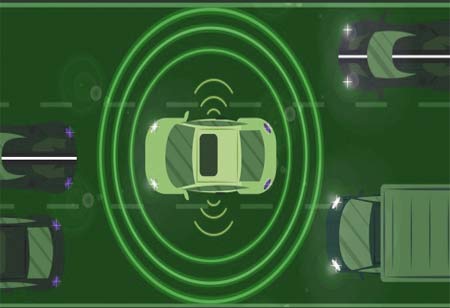THANK YOU FOR SUBSCRIBING
THANK YOU FOR SUBSCRIBING
Be first to read the latest tech news, Industry Leader's Insights, and CIO interviews of medium and large enterprises exclusively from Auto Tech Outlook

By
Auto Tech Outlook | Monday, January 29, 2024
Stay ahead of the industry with exclusive feature stories on the top companies, expert insights and the latest news delivered straight to your inbox. Subscribe today.
With continuous advancements in technology, affordability, and infrastructure, ADAS is poised to transform the driving experience in APAC, making roads safer and more enjoyable for everyone.
FREMONT, CA: The rapid integration of Advanced Driver Assistance Systems (ADAS) within the Asia-Pacific (APAC) region is propelling a compelling pursuit of enhanced road safety. These advanced technologies are reshaping the driving experience by augmenting safety measures, alleviating traffic congestion, and enhancing driver comfort in their capacity as digital co-pilots.
The APAC ADAS market is poised to achieve an impressive valuation of USD 40.92 billion by 2027, exhibiting a compelling CAGR of 16.96 percent. This remarkable expansion is attributed to several key factors. Firstly, the influence of government regulations is acting as a significant catalyst. These regulations mandate the incorporation of ADAS features in specific vehicle segments, aligning with ambitious safety goals. Additionally, the region's youthful and tech-savvy population is driving demand, with an increasing awareness of safety features and a willingness to invest in premium automotive technologies. The accessibility of ADAS components is expanding due to advancements in sensor technology and computing power, making these technologies more affordable and accessible to a broader consumer base. Moreover, the market is experiencing heightened interest driven by the emphasis on comfort and efficiency, with features like adaptive cruise control and automatic emergency braking enhancing safety and also improving driving comfort and fuel efficiency.
The proliferation of electric vehicles (EVs) is significantly hastening the integration of ADAS, as EVs commonly incorporate sophisticated safety features as standard offerings. The development of next-generation ADAS solutions necessitates collaborative efforts among automakers, technology companies, and research institutions. Such partnerships facilitate the collective expertise needed to advance ADAS capabilities and ensure seamless integration with evolving automotive technologies. Additionally, fostering public education and awareness campaigns is imperative to cultivate trust and acceptance of ADAS technologies among consumers. By enhancing understanding and dispelling misconceptions, these initiatives contribute to more widespread and informed adoption of ADAS, ultimately promoting safer and more efficient driving experiences.
The outlook for ADAS in the APAC region appears highly promising. Positioned to emerge as a frontrunner in the global integration of these transformative technologies, APAC benefits from consistent governmental backing, continual technological advancements, and an escalating consumer preference for enhanced comfort and safety features.
The landscape of ADAS in the region transcends mere statistics and market shares. It revolves around a profound commitment to injury prevention, life-saving measures, and the enhancement of millions of individuals' driving experiences. Picture families embarking on their journeys with unwavering confidence, reassured by the vigilant oversight of their vehicles. Envision a seamlessly flowing traffic system facilitated by intelligent support technologies. This is the visionary future that ADAS strives to realize, and APAC stands at the forefront of initiatives to bring this vision to fruition.
Anticipate a transformative shift in the approach to travel and road interaction as the engines of ADAS innovation resound throughout the region. APAC leads the charge towards a future characterized by sustainable, intelligent, and secure mobility. Consider this journey as just the initial phase of an ongoing evolution towards a safer and more efficient transportation landscape.
 Copyright © 2025 AutoTech Outlook. All Rights Reserved | Privacy Policy | Subscribe | Sitemap | About us | Feedback Policy | Editorial Policy
Copyright © 2025 AutoTech Outlook. All Rights Reserved | Privacy Policy | Subscribe | Sitemap | About us | Feedback Policy | Editorial Policy 



